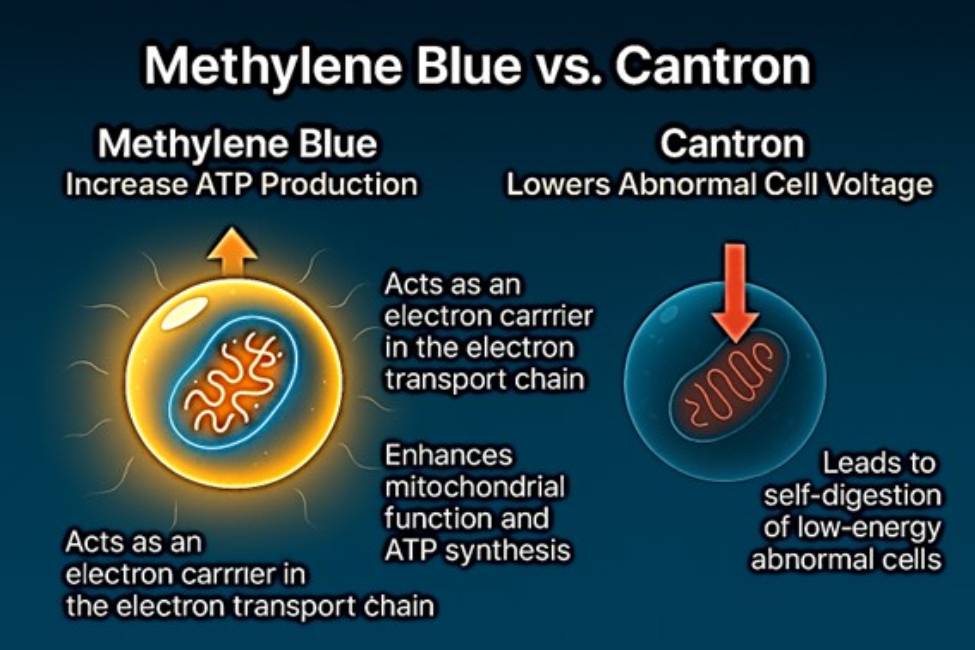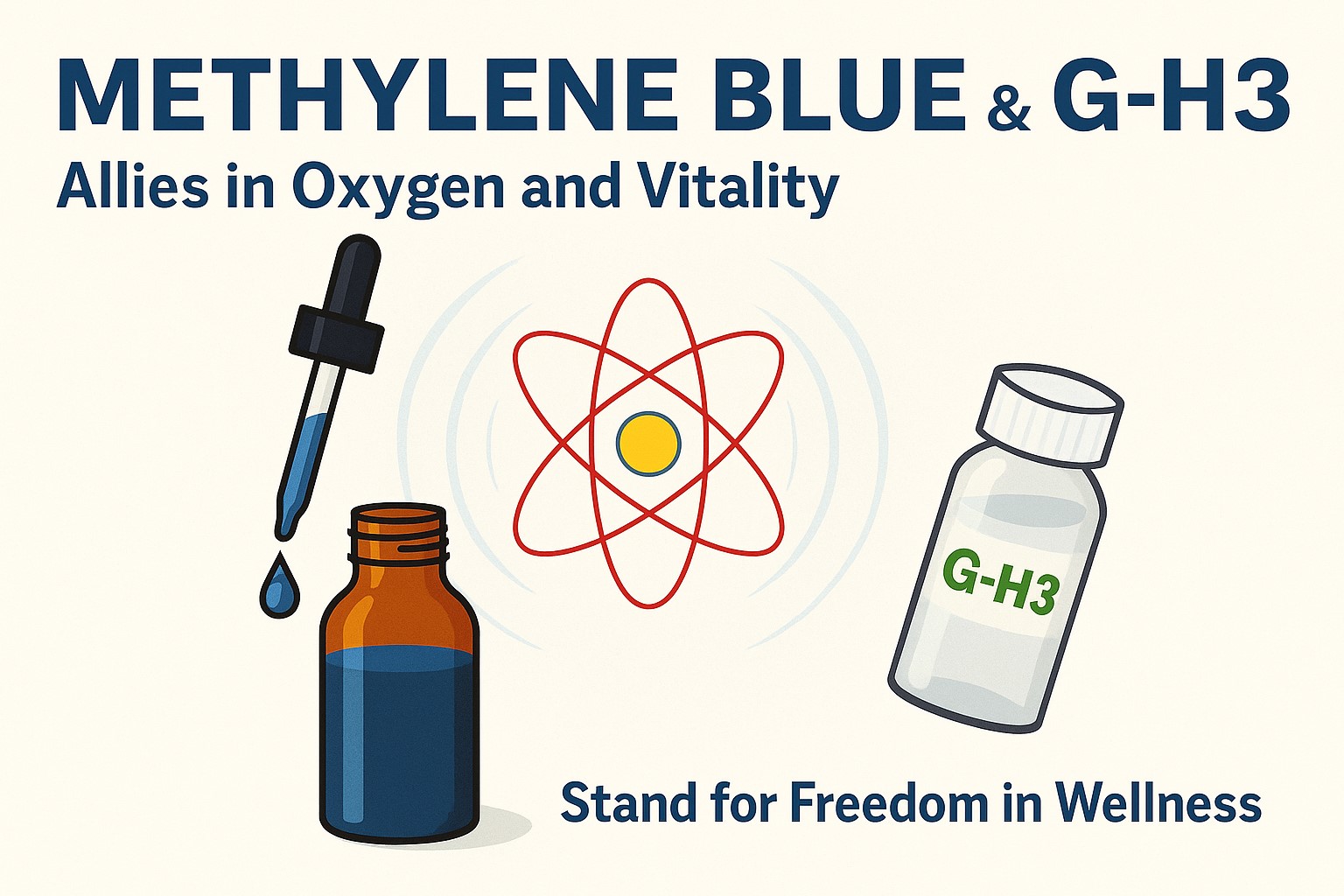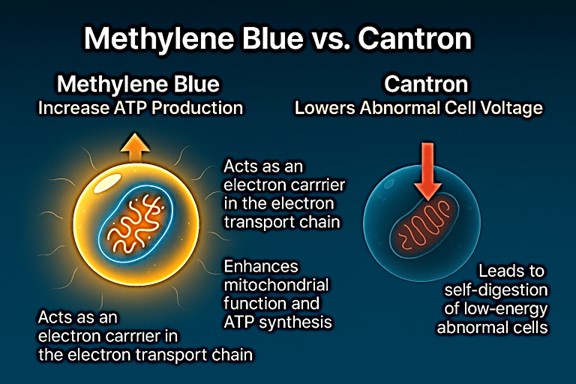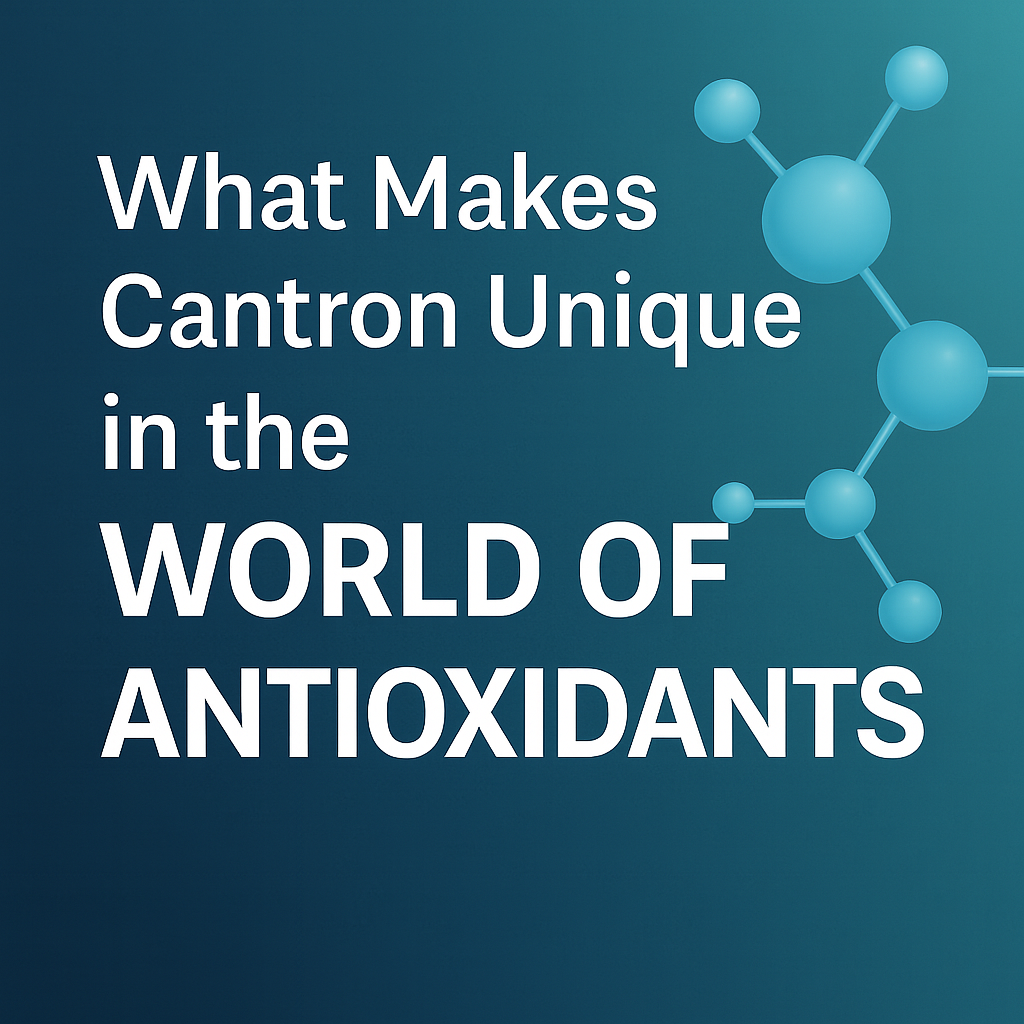
By: Jerome Godin and Captain Cantron (AI Assistant)
Methylene Blue is having a moment. Masses of people, from biohackers to longevity researchers, to even public figures like RFK Jr., the head of the M.A.H.A. movement, are turning to this simple, century-old molecule for its ability to sharpen memory, boost energy, and support brain health. What makes it so interesting? Methylene Blue is a redox agent — it can cycle electrons through the mitochondria, helping cells make more ATP, the energy currency of life.
The benefits of Methylene Blue have been well established. But how does it connect to Cantron and the bioelectrical revolution?
⚡ The “ATP Avoid List” — Now Obsolete!
Many individuals inquire about whether Methylene Blue can be used alongside Cantron. Because Methylene Blue supports cellular ATP production, it was once thought to conflict with Cantron. There was a previous assumption that any substance increasing ATP would interfere with Cantron’s unique bioelectrical wellness mechanism.
Sheridan’s Original Vision
James Sheridan, the developer of the formula, which is now Cantron, never created a broad “ATP avoid list.” His focus was always on bioelectrical balance and redox potential — not prohibiting all ATP-supportive compounds.
In the late 1990s, a chemist, working under the auspices of the Sheridan children, introduced the idea that all ATP boosters reduce or negate the formula’s effect. His hypothesis simply reflected the limited scientific framework at the time. By the early 2000s, Tanya Harter Pierce’s book “Outsmart Your Cancer” amplified this teaching, giving the “avoid list” wide circulation. But this interpretation was based on incomplete science. Until now, even Medical Research Products, the exclusive manufacturer of Cantron distributed this flawed list.
Modern Understanding
Today, with advances in mitochondrial biology and redox chemistry, we know the truth is more nuanced:
- Boosting ATP through sugar and glycolysis can feed unhealthy cells.
- But boosting ATP through redox balance and electron transport (as Methylene Blue does) actually supports healthy cells and aligns with Sheridan’s terrain theory.
Thus, the rigid “avoidance list” is outdated. Sheridan himself never authored it, and MRP is already working on a new, more accurate list.
The Modern View: Voltage vs. Energy
What we now know:
Cantron’s genius lies in restoring bioelectrical balance — lowering abnormal voltage in unhealthy cells until they self-digest, while sparing healthy cells that have energy reserves.
Methylene Blue, on the other hand, acts as a redox shuttle. It restores proper electron flow in mitochondria, helping healthy cells make ATP more efficiently.
Far from being a conflict, this creates a potential synergy:
- Methylene Blue strengthens healthy cells.
- Cantron selectively destabilizes abnormal cells.
Together, they could form a dual strategy for terrain-based wellness: one agent supports resilience, the other resets the voltage terrain to favor health over dysfunction.
Why This Matters Now
The popularity of Methylene Blue creates an inroad for a bigger conversation. If millions are already learning that a simple redox agent can change their energy, then they are ready to hear about Cantron — the formula that has been doing terrain-based bioelectrical balancing for over 42 years.
And when public figures like RFK Jr. openly embrace Methylene Blue, the door is wide open to discuss Cantron in the same breath.
This is no longer fringe science — it’s the future of wellness.
The Right to Try, Tell, Hear
Every individual has the right to explore safe, non-toxic compounds that support health. They have the right to try them, the right to tell their stories, and the right to hear the truth about wellness innovations like Methylene Blue and Cantron.
These aren’t competitors — they are allies in the same revolution: restoring the body’s energy, voltage, and vitality from the inside out.
⚡ Conclusion
Sheridan was a visionary, but he did not create the “avoid list.” That came later, through, the Sheridan children’s chemist, and Tanya Harter Pierce’s book, “Outsmart Your Cancer.” Their framework was sincere but incomplete. With today’s science, we see that Methylene Blue doesn’t weaken Cantron’s work — it may actually strengthen the overall wellness terrain when used responsibly.
This is the beginning of a new conversation. And Cantron belongs at the heart of it.
Coming Soon
👉 Cantron Compatibility with Ivermectin & Fenbendazole
👉 The New Avoidance List — Updated with Modern Redox & Voltage Science
References
- Sheridan, J.V. Original Research Papers and Formula Notes. (Unpublished, 1936–1980s).
- Battelle Columbus Laboratories. Independent Laboratory Analysis of Entelev/Cantron. 1962.
- Thomson, B. Cantron, Ingenious Cancer Killer . (Book Chapter).
- Kelley, S. Healing Cancer. (Book Chapter).
Footnotes
5. Sheridan, James V. Introduction to Entelev.
6. Sheridan, James V. The Technology of Entelev IND #20258.
7. The Chemical Characterization of Entelev, Temple University (with contributions from J.V. Sheridan).
8. Trull, Louise B. The Cancell Controversy. Hampton Roads Publishing Company, 1993. ↩
9. Wilson, Don. Lost Manuscript on Entelev and Cantron.
10. Maly, Philip W., O.D. Cancer: A Protein Disease (from information obtained from Jim Sheridan, May 4, 1990).







Recent Comments